COVID-19 cases are once again hitting record highs here in the US as the pandemic rages on. Do you have a plan to boost your mental health this fall and winter? If you don’t have one yet, getting outside is the best way to give your mental health a boost during this Covid winter.
With all international travel and most domestic travel on hold, look closer to home for happiness. Interestingly, some of the photography adventures I have taken in years past check all of the boxes for Covid safety. What a perfect way to boost your mental health! Today, let’s have a look at fifteen destinations in the western United States to get outside and explore. In addition, you can treat your mental health away from the crowds and from the safety of your Covid bubble.
A Word of Caution About Adventuring During COVID
Just because we’re talking about fun adventures today does not mean it’s a green light to let loose. Stay close to home and stick to day trips. This is not the appropriate time to be pin-balling all over the country. Don’t invite all of your friends to come with you, either. Instead, stick to small groups of people you live with, who are already in your Covid bubble. Pack plenty of food, drinks, and sanitizer so you don’t need to stop anywhere.
Please obey all local Covid restrictions, ordinances, and mandates. I know it feels like so many of them have been politicized, but they are there for a reason. Many state and national parks have their own restrictions as well. You will likely be fined if you violate restrictions on state or federal land.
Finally, don’t forget to plan for any hazards you would normally encounter during non-COVID times. Many of these destinations can close unexpectedly due to snow and ice in the winter. Speaking of which, know the tire chain requirements for any states you’ll be traveling through. Carry chains with you and know how to chain up yourself if you’re expecting to be in snow country. If you have any doubts, it’s probably best to stay home.
Now, let’s kick those Covid blues and put your mental health on the fast track to happiness.
1. Organ Pipe Cactus National Monument – Arizona
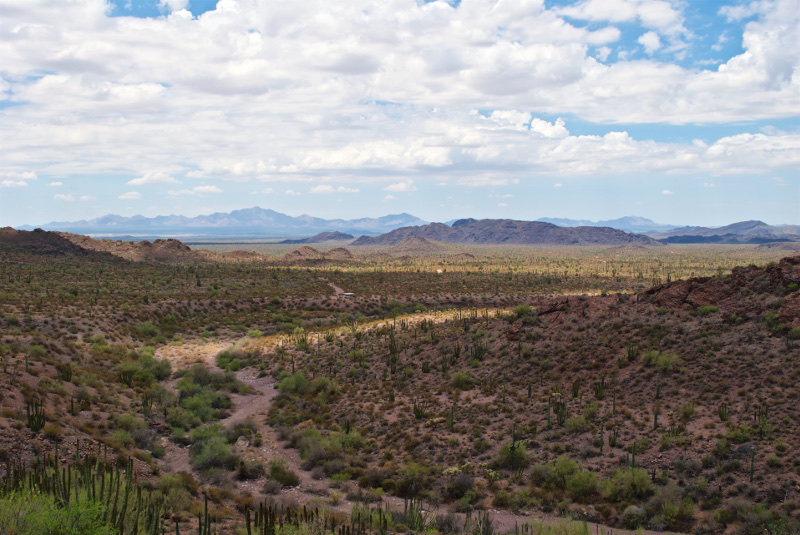
The Organ Pipe Cactus National Monument sits on the US-Mexico border at the south end of Arizona’s Highway 85. It is the only place in the United States to see the rare organ pipe cactus. While the cactus itself is fairly common south of the border, even the mild winters in Arizona’s low deserts have proven to be too cold for it.
The national monument is also home to an incredible diversity of rare species of flora, fauna, and surprisingly, fish. The Quitobaquito Oasis is home to species of fish that cannot be found anywhere else in the world. The rarest of all is the Sonoyta pupfish. Named for the Mexican town that sits across the border from the monument, Quitobaquito is the only known place in the world that they inhabit.
Note: The access roads to Quitobaquito and Dos Lomitas Ranch are currently closed due to construction of new border fencing.
You’ll find the best photo ops along the Ajo Mountain drive. The 33 km (21 mi) guided tour starts across Highway 85 from the Visitors Center. Along the way, you’ll stop and see the best of what the Sonoran Desert has to offer. If you’re looking to get off the beaten path a little more, consider the North Puerto Blanco Drive. It starts from behind the Visitors Center, but beware that you’ll need a high clearance 4×4 to tackle it.
2. Pacific Coast Highway – Oregon and California
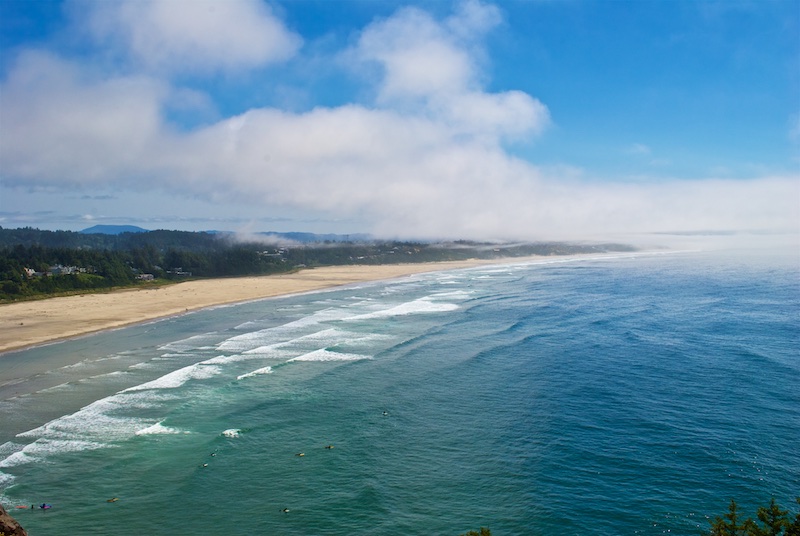
Is there any better feeling than the freedom of a drive up the coast? The fresh ocean air is bound to give anyone’s mental health a shot in the arm. In the age of Covid, keep your stops away from towns and population centers. Find a quiet pull-out at the top of a bluff, and enjoy that nice picnic lunch that you brought from home as you watch the world go by.
3. Burr Trail – Utah
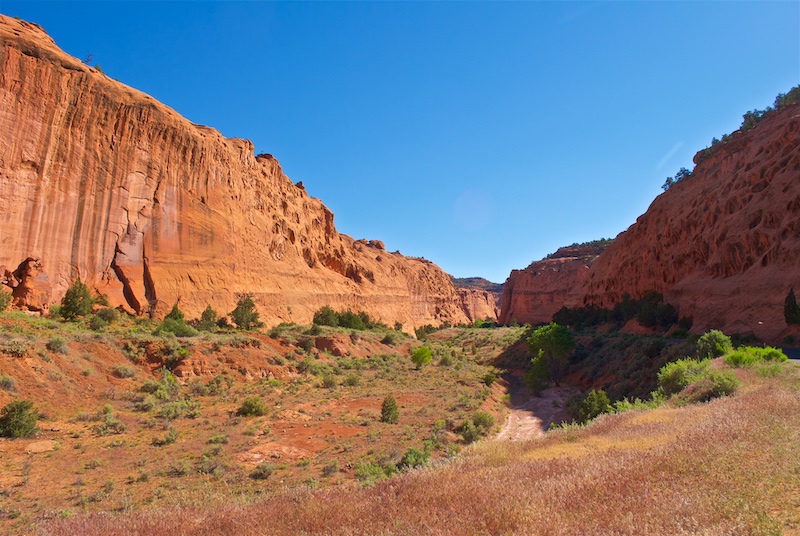
The Burr Trail winds over 120 km (76 mi) through the guts of Utah’s breathtaking backcountry. Starting in the town of Boulder, you’ll pass through the Grand Staircase – Escalante National Monument, Capitol Reef National Park, and the Glen Canyon National Recreation Area.
Drive through beautiful canyons, across stunning mesas, and descend the infamous Burr Trail Switchbacks, which drop close to 1,000 feet elevation in just 1 mile. At a 13% grade on a narrow dirt track, the switchbacks satisfy the hunger of even the most adventurous. You’ll quickly see why it’s rated one of the most scenic drives in Utah and the ultimate exercise in social distancing.
4. Palo Duro Canyon – Texas
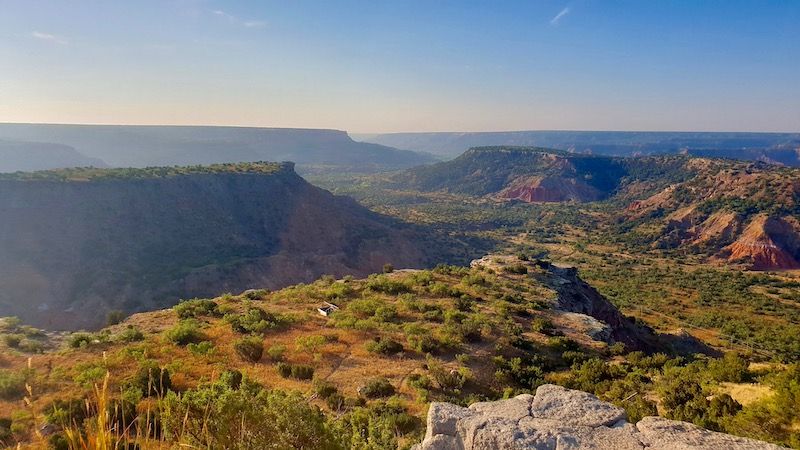
Known as the Grand Canyon’s Little Brother, Palo Duro Canyon is the second largest canyon in the United States. Meaning “strong wood” in Spanish, Palo Duro Canyon offers outdoor activities for everyone, including hiking, mountain biking, and horseback riding. The entrance to the state park is a short drive south of Amarillo on Interstate 27. And unlike the Grand Canyon, you can actually drive the bottom of Palo Duro Canyon in a normal passenger car.
You’ll get plenty of great photo opportunities from both the rim and the bottom of the canyon. I recommend arriving close to either sunrise or sunset in order to take advantage of soft, low light on the canyon’s walls. Snap some pictures from the lookouts near the Visitors’ Center before starting your descent into the canyon.
5. Great Salt Plains – Oklahoma
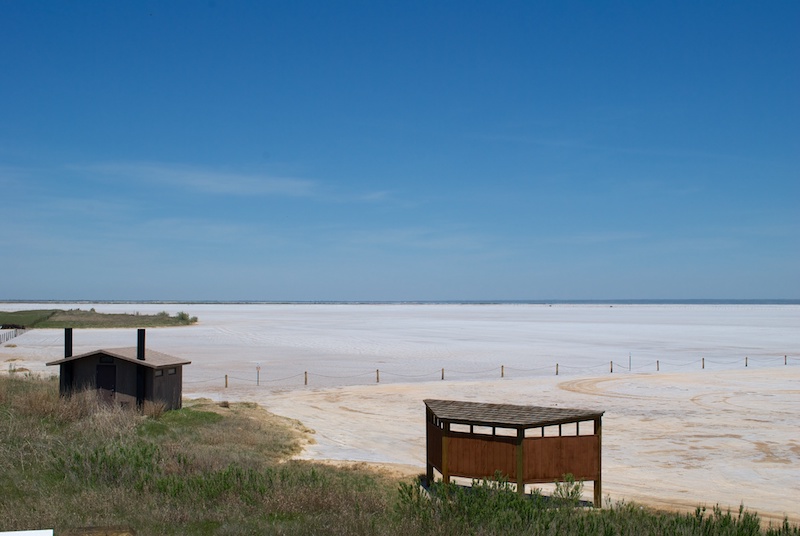
Take a journey back in time at Oklahoma’s Great Salt Plains. The salt pan is a remnant of prehistoric times, when a vast ocean covered what is now Oklahoma. In the summertime, you can venture out on the salt flats and dig for selenite crystals. The Great Salt Plains National Wildlife Refuge is the only place in the world where you’ll find hourglass-shaped selenite crystals.
Fast-forward to today, and you’ll find a state park, a national wildlife refuge, and a large lake. The Great Salt Plains are a great spot to go hiking, swimming, and boating. However, my favorite activity is to take the quiet and tranquil scenic drive through the salt marshes off of Highway 11. You’ll truly be at one with your camera and with nature. If you’re there at the right time of year, Oklahoma is a popular stop along a major bald eagle migration route, too.
6. Apache Trail – Arizona
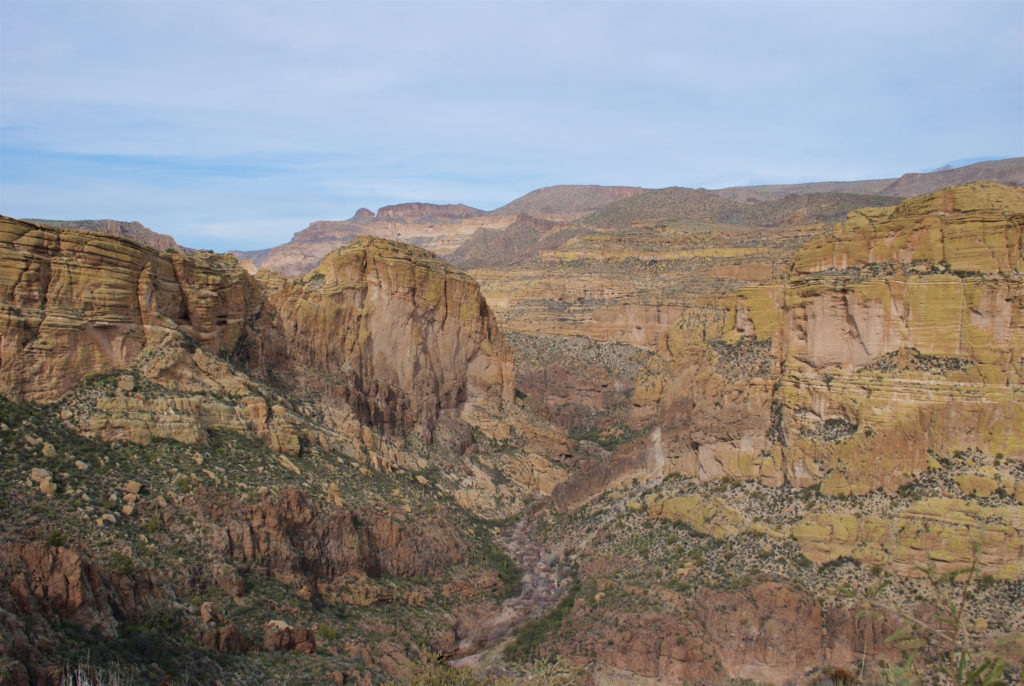
Take breathtaking drive through the rugged terrain of Arizona’s Superstition Mountains. Originally built as a stagecoach road in the early 20th century, the Apache Trail was named after the Apache Indians who used this same route to cross the mountains. Today, it is Arizona’s State Route 88, an easy day trip from Phoenix.
Much of the Apache Trail is unpaved, but passable in a standard passenger car. There are several steep, narrow hills and one-lane bridges. My best advice to you is that if you don’t like heights, don’t look down. When you reach the end of the trail, you’ll be rewarded with spectacular views of Theodore Roosevelt Lake.
7. Death Valley’s Badwater Backcountry – California
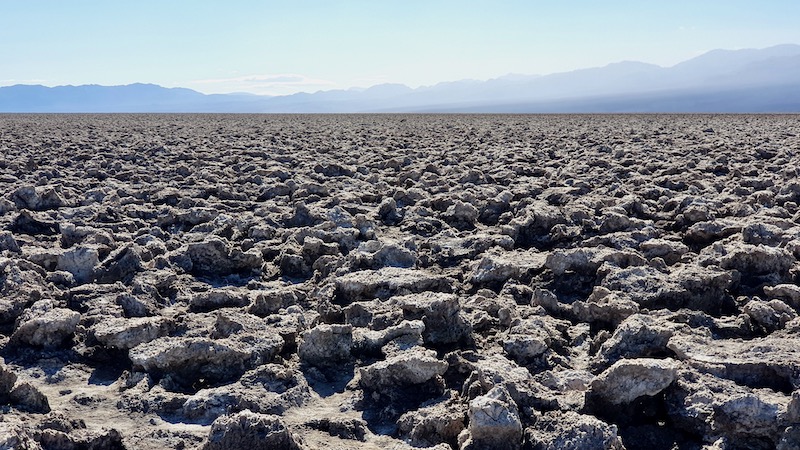
You don’t appreciate exactly how extreme an environment Death Valley is until you travel through its backcountry. Head west out of Pahrump, Nevada, and follow California Highways 178, 127, and 190. You’ll wind up in the heart of Death Valley National Park in the aptly-named town of Furnace Creek, California. Furnace Creek measured the world-record high temperature of 134°F (57°C) on 10 July, 1913. You’ll also pass through Badwater Basin, which marks the lowest point in the United States, at 86 meters (282 ft) below sea level.
Before setting out, please know what you’re getting yourself into. You will be driving through some of the most remote, desolate backcountry in the world. There will be times that you’re more than 120 km (75 mi) from the nearest town.
Gas up before you leave Pahrump, as it could be over 320 km (200 mi) before you see another gas station. Stay hydrated, as dehydration and heat exhaustion are possible even in the winter. And if you break down? You better know how to fix it or have a satellite phone. There is no cell service inside Death Valley National Park, and seeing other cars in the backcountry is extremely rare.
8. White Sands National Park – New Mexico
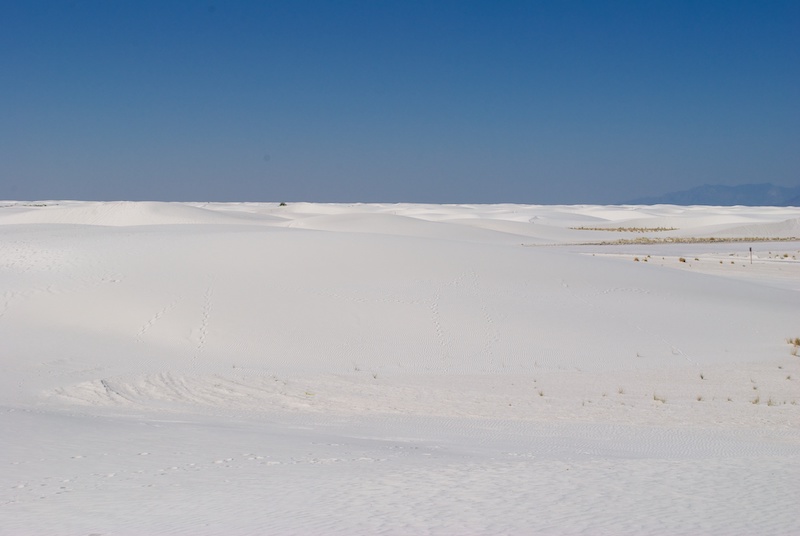
Home to the world’s largest gypsum dunefield, White Sands is a true natural wonder. Sitting just outside of Alamogordo, New Mexico, it’s one of the only National Parks that is very slowly moving downwind.
Are you wondering what exactly gypsum is? It looks like salt, and feels like sand, but is in fact neither of them. Gypsum is a soft mineral composed mainly of calcium sulfate. In fact, the “sand” at White Sands National Park is soluble in water. If you put a handful of it into a glass of water, it will dissolve.
9. Antelope Hills – Oklahoma
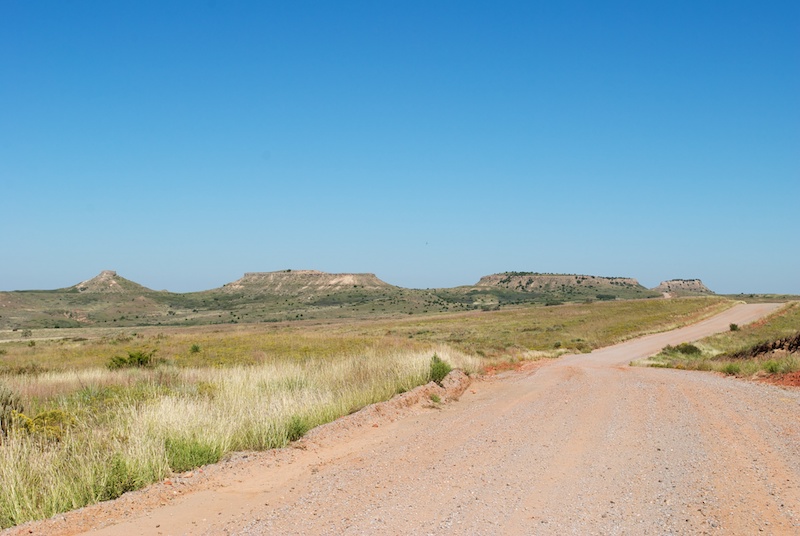
The Antelope Hills are a small, but important landmark in the history of both Oklahoma and the United States as a whole. In addition to marking the westernmost point settlers could claim in Oklahoma during the land rush of the 1800s, it also marked the US-Mexico border.
At the time, it separated the United States’ Indian Territory from Mexico’s Alta California territory. Alta California was mostly comprised of what is currently Texas, New Mexico, Arizona, and California. The United States acquired the territory as part of the Treaty of Guadalupe Hidalgo, which ended the Mexican-American War in 1848.
The dirt road to the Antelope Hills is passable in a standard passenger car and is generally void of other traffic. However, be aware that 18-wheelers sometimes use it as a shortcut to access a nearby oil rig, so the road can be extremely washboarded at times. If you’re in the area, I encourage you to visit the nearby Black Kettle National Grassland and the Washita Battlefield National Historic Site.
10. Lee’s Ferry and Marble Canyon – Arizona

If you’re looking to avoid crowds at the Grand Canyon, make a stop near Page at Lee’s Ferry and Marble Canyon. Sitting just outside the boundaries of Grand Canyon National Park, there is plenty of space to keep yourself socially-distanced from the few other people that may be there.
Pull up a chair on the beach and stick your feet in the water to cool off. Have a picnic, read a book, or just relax and enjoy the solitude. If you’re feeling exceptionally brave, take a swim. Lee’s Ferry is only a few miles downstream of the Glen Canyon Dam, so water temperature usually top out around 45°F (7°C), even in the dead of summer.
As you leave Lee’s Ferry, stop for a few photos at the Navajo Bridge. The foot bridge provides stunning views of Marble Canyon from 500 feet above the Colorado River. Be aware that the bridge can occasionally be crowded, though large crowds are mostly a summer phenomenon.
11. Scenic Highway 12 – Utah
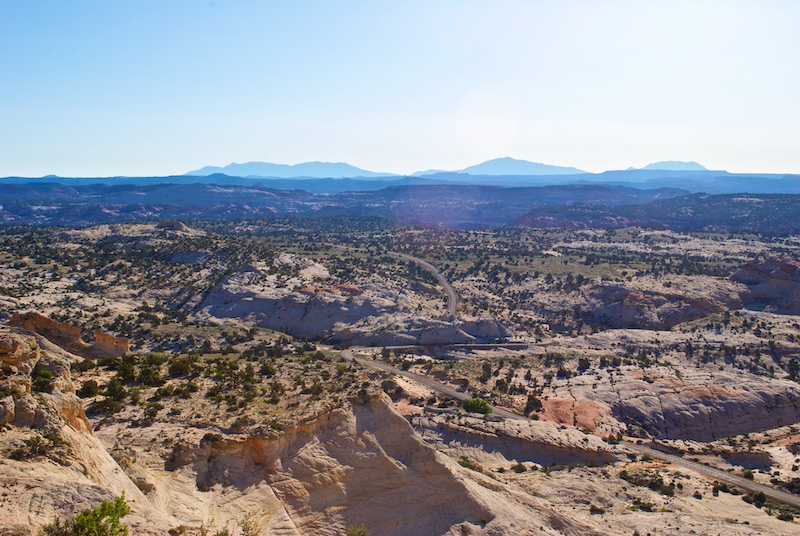
Utah’s Scenic Highway 12 is probably the most spectacular drive I’ve ever taken. It’s well-deserving of its distinction as an All-American Road. You’ll see the stunning rock formations near Zion National Park, the famous hoodoos of Bryce Canyon, majestic mountains, lush forests, and much more.
If Scenic Highway 12 leaves you craving more, the highway provides easy access to Zion National Park, Bryce Canyon National Park, the Burr Trail, Capitol Reef National Park, and Utah’s Scenic Highway 95. Do you have a 4×4 and a stronger quest for adventure? Many of Utah’s famous scenic backways, including Hell’s Backbone and Hole-in-the-Rock, can be found right off of Highway 12.
12. US-395 – California
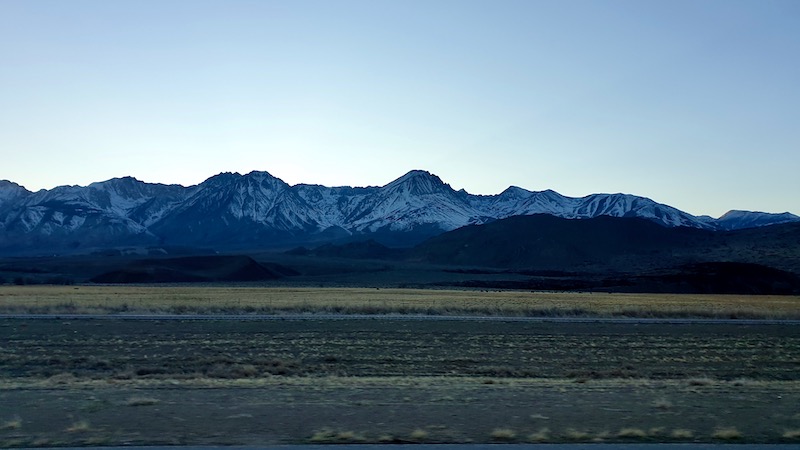
Many travel guides properly designate US-395 in California as an All-American Road Trip. Running along the base of the Sierra Nevada Mountains from Ridgecrest to Lake Tahoe, there is no shortage of beautiful scenery.
After starting on the valley floor, you’ll pass through deserts, grasslands, and pine forests as you ascend to nearly 2,500 meters (8,200 feet) elevation at Conway Summit. For more than just a driving trip, US-395 offers plenty of side excursions. Turn off and explore the Alabama Hills, Inyo or Stanislaus National Forests, or one of the roads to the many ski resorts along the way.
In the wintertime, please check the road conditions for every road you plan to explore in this area. The Sierra Nevada are notorious for their massive snowstorms, which often strike fast and hard. As a result, many roads close in the winter, and you don’t want to get cut-off or stranded.
Additionally, I also recommend you carry tire chains at all times during the winter months. California requires them for most vehicles when it snows in the Sierra. If you have any doubts about snow, consider driving US-95 as an alternate. It runs parallel to US-395 on the Nevada side of the state line at a much lower elevation. It’s not quite as scenic, but it sure beats sitting around at home.
13. Gloss Mountain State Park – Oklahoma
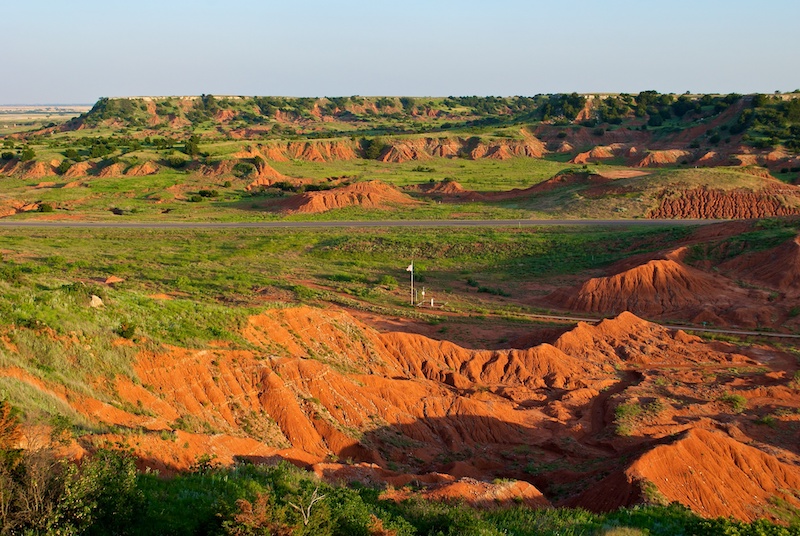
Don’t let the fact that it’s less than 1 square mile fool you. Gloss Mountain State Park packs a punch for its small size. Take the short hike to the top of the escarpment for spectacular 360-degree views of the surrounding prairie. It’s an incredible spot to watch the sunset. Alternatively, find a quiet spot to have a picnic, ponder your thoughts, or meditate.
When you’re done, drive the Gloss Mountain Loop. The dirt track loop is part of Oklahoma’s Great Plains Trail system. While not part of the state park, it offers a unique perspective of the surrounding area, and plenty of good photo ops. You’ll probably meet a few friendly cows along the way, too.
14. Mogollon Rim – Arizona
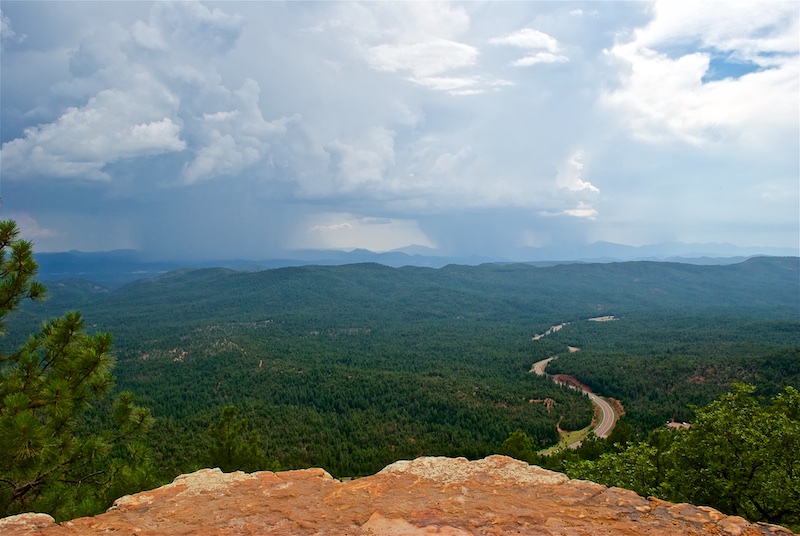
I can only describe the Mogollon Rim as a therapeutic escape. At nearly 8,000 feet (2,200) meters above sea level, I have always used it to escape Phoenix’s scorching summer heat. There’s something truly magical when you feel the cool summer breezes through the ponderosa pines. Using that logic, it would make a great escape from Covid life as well.
The Mogollon Rim Road, Forest Road 300, runs about 75 km (45 mi) right along the edge of the rim. It passes through the Coconino and Apache-Sitgreaves National Forests, offering an incredible diversity of viewpoints and photo ops. Find a quiet spot with a great view at one of the many turnouts along the Rim Road or head over to one of the area’s many lakes and fully immerse yourself in your escape.
Note: The Mogollon Rim Road closes for the winter after the first major snowfall and usually re-opens sometime in April.
15. Wichita Mountains Wildlife Refuge – Oklahoma
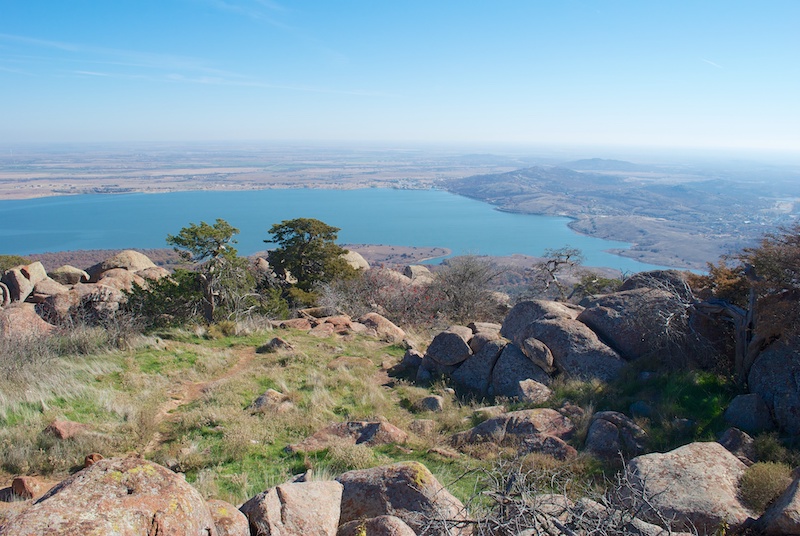
The Wichita Mountains Wildlife Refuge was one of my go-to getaways when I lived in Oklahoma. Start your day with a drive up Mt. Scott for a bird’s eye overview of the refuge. At 2,500 feet (760 meters) above sea level, the summit of Mt. Scott is the highest point in the main body of Oklahoma. From the top, you’ll get a breathtaking 360 degree view of the wildlife refuge, the Wichita Mountains, and nearby towns.
Next, make your way through the wildlife refuge on State Highway 49. Stop at any of the lakes, information stations, or pullouts. You’ll often see buffalo and longhorn cattle roaming the grasslands. There is never a shortage of wildlife for bird watchers, especially during the bald eagle migrations through Oklahoma. Additionally, keep an eye out for prairie dogs peeking out from their burrows.
If you still have some time, visit Great Plains State Park and Quartz Mountain State Park. Both are located just west of the Wichita Mountains Wildlife Refuge. They highlight the true diversity of the landscapes across southwestern Oklahoma. You’ll see much of the same wildlife and achieve the same rewarding escape.
Conclusion
I can’t stress enough the importance of taking care of your mental health during this Covid winter. There will be dark days, as well as times that feel hopeless. Having an outlet to give you a temporary escape from reality and put a smile back on your face is one of the best decisions you can make for yourself.
Top Photo: Gorgeous Landscapes at the Rainbow Point Overlook
Bryce Canyon National Park, Utah – May, 2017
Pingback:15 COVID-Friendly Photography Adventures in the Eastern US
Pingback:7 Lesser-Known Spots at Grand Canyon to Take Awe-Inspiring Photos